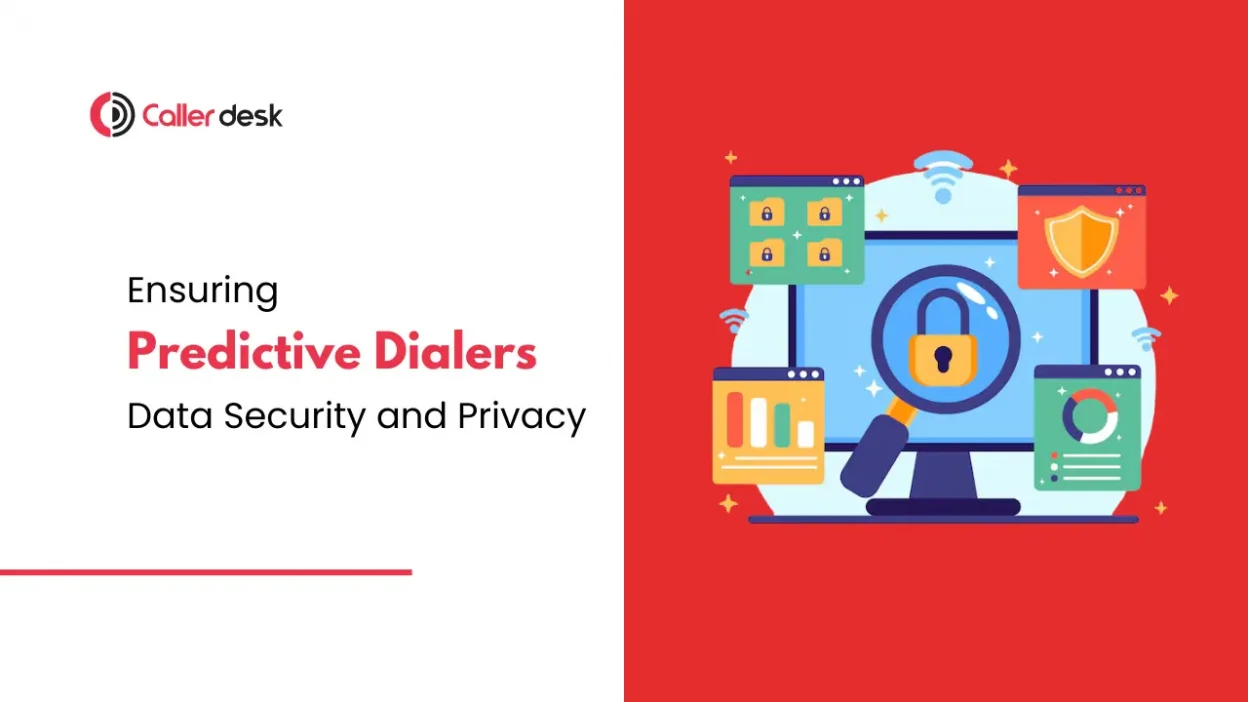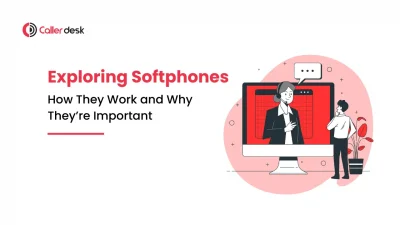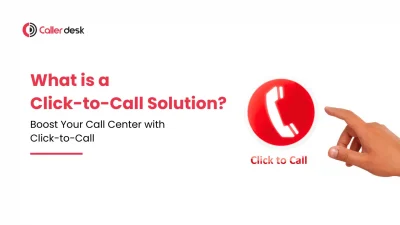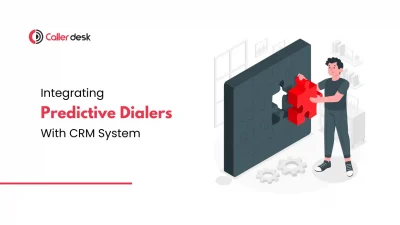Is Your Call Center Fully Equipped to Protect Customer Data?
The frequency and sophistication of cyberattacks are growing. Cybersecurity researchers report that a cyberattack occurs every 39 seconds, targeting individuals and organizations alike. Call centers, handling sensitive customer data daily, are especially vulnerable.
Predictive dialers have transformed the efficiency of call centers, automating outreach and connecting agents with leads faster. However, the same features that make predictive dialers effective—managing and transmitting vast amounts of data—also make them attractive targets for cybercriminals.
A recent study by Pew Research found that 79% of consumers are deeply concerned about how their data is being collected and used. If a breach occurs, businesses risk losing not only their customers but also their reputation and significant financial resources.
This guide outlines the steps to secure predictive dialers, achieve compliance with data regulations, and make robust security your competitive edge.
Why Data Security is Critical for Predictive Dialers
The True Cost of Data Breaches
Predictive dialers process sensitive customer information such as:
- Personal Data: Names, phone numbers, and addresses.
- Financial Information: Payment methods and transaction histories.
- Regulated Data: Healthcare details and other sensitive records in industries like telemedicine and insurance.
Consequences of Inadequate Security:
- Massive Financial Losses: Data breaches cost organizations an average of $4.45 million per incident (IBM).
- Regulatory Fines: Penalties under GDPR can reach up to €20 million or 4% of annual turnover (European Commission).
- Reputation Damage: 81% of customers say they’d stop doing business with a company after a data breach (Forbes).
- Operational Downtime: Recovering from a breach can take weeks, disrupting operations and reducing profitability.
Real-World Example: In 2022, a ransomware attack on a global call center exposed the personal data of 500,000 customers, leading to $25 million in fines and a 35% decline in customer retention.
Security as a Strategic Advantage
Beyond protecting data, strong security measures differentiate your call center:
- Increased Trust: Secure businesses attract more customers, reducing acquisition costs by 15-20% (Forrester).
- Improved Customer Retention: Companies with robust security report 40% higher retention rates.
- Operational Efficiency: Preventing disruptions ensures your call center operates smoothly and efficiently.
Insight: In today’s trust-driven economy, security is no longer a back-office function—it’s a core business strategy.
How to Secure Predictive Dialers: A Step-by-Step Guide
1. Leverage Advanced Encryption Techniques
Encryption is the backbone of any secure system. It protects sensitive data by converting it into unreadable code, ensuring that even intercepted data remains unusable.
Understanding Encryption Types:
- Symmetric Encryption: Uses a single key for both encryption and decryption. While fast, it’s less secure for large-scale applications.
- Asymmetric Encryption: Uses two keys (public and private) to enhance security, ideal for transmitting sensitive data over networks.
Actionable Steps:
- Encrypt all data stored in your system using AES-256, a gold standard in data protection.
- Secure data in transit with TLS 1.3 or later protocols.
- Regularly update encryption keys to prevent breaches.
CallerDesk Feature: CallerDesk ensures end-to-end encryption with AES-256 and TLS, protecting data both at rest and in transit.
2. Strengthen Access Controls with RBAC
Role-Based Access Control (RBAC) ensures that employees can only access the data and tools necessary for their specific roles.
Example of RBAC Implementation:
- Agents: Limited to customer contact details relevant to their current tasks.
- Supervisors: Access to performance metrics and limited customer history.
- IT Administrators: Permissions to manage backend systems without accessing sensitive customer data.
Steps to Implement RBAC:
- Define roles clearly, categorizing access levels by job requirements.
- Combine RBAC with Multi-Factor Authentication (MFA) to secure login processes.
- Use CallerDesk’s activity monitoring tools to track access patterns and detect anomalies.
3. Conduct Regular Security Audits
Audits help identify vulnerabilities before they can be exploited and ensure compliance with laws like GDPR, HIPAA, and CCPA.
Audit Checklist:
- Review access logs for unusual activity.
- Verify encryption and firewall configurations.
- Test compliance with GDPR and other regulations.
Pro Tip: Schedule quarterly audits and include penetration tests for comprehensive assessments.
4. Partner with Secure Cloud Provider
Cloud-based predictive dialers offer flexibility and scalability but depend heavily on the security of the chosen provider.
Benefits of Cloud Computing for Call Centers:
- Scalability: Handle fluctuating call volumes seamlessly.
- Cost Efficiency: Minimize upfront infrastructure investments.
- Automatic Updates: Stay protected against emerging threats with frequent updates.
Key Security Features:
- End-to-End Encryption: Ensures data security during storage and transit.
- Regulatory Certifications: Look for ISO 27001 and SOC 2 compliance.
- Disaster Recovery: Providers offering automated backups ensure minimal downtime.
CallerDesk Integration: CallerDesk works with secure cloud providers to deliver safe, reliable, and scalable solutions.
5. Train Employees on Cybersecurity Best Practices
Employees often serve as the first line of defense against data breaches. However, without proper training, they can also be the weakest link.
Training Exercises to Consider:
- Phishing Simulations: Test employees’ ability to identify and report suspicious emails.
- Data Handling Workshops: Teach secure methods for managing sensitive customer data.
- Incident Response Drills: Prepare employees to act swiftly in the event of a breach.
Example: After implementing phishing simulations, a large call center reduced successful phishing attempts by 70% (Verizon).
6. Monitor User Activity in Real Time
Real-time monitoring helps detect and prevent unauthorized access or suspicious behavior.
How It Works:
- Identify unusual login patterns, such as attempts from multiple locations.
- Flag large data exports or repeated access attempts to sensitive files.
- Respond to real-time alerts for potential breaches.
CallerDesk Feature: With CallerDesk’s real-time activity tracking, managers receive instant alerts on suspicious activities, ensuring timely interventions.
7. Automate Compliance Management
Staying compliant with regulations like GDPR, HIPAA, and CCPA can be challenging. Automation simplifies the process and minimizes human error.
CallerDesk’s Compliance Tools Include:
- Consent Management: Track and manage customer permissions.
- Automated Data Subject Requests: Quickly respond to deletion or access requests.
- List Scrubbing: Ensure campaigns comply with Do Not Call (DNC) lists.
Example: A healthcare call center using CallerDesk avoided a $200,000 GDPR fine by automating data subject requests and list scrubbing.
Additional Security Measures for Maximum Protection
1. Multi-Layered Firewalls
Firewalls act as gatekeepers, blocking unauthorized access and monitoring network traffic.
2. Incident Response Plans
Document clear protocols for handling data breaches, including detection, containment, and recovery steps.
Testing Your Plan:
Conduct annual simulations to evaluate and refine your response capabilities.
3. Regular Software Updates
Keep all systems, including predictive dialers, updated to address vulnerabilities.
The Business Benefits of Data Security
Why Security Drives Success:
- Enhanced Customer Loyalty: Trust in data protection boosts retention by 40%.
- Operational Continuity: Fewer disruptions lead to uninterrupted service.
- Higher ROI: Avoid costly fines and revenue losses from breaches.
Conclusion: Make Security Your Strength
In today’s competitive landscape, data security is more than a necessity—it’s a strategic advantage. By implementing the right measures and leveraging CallerDesk’s tools, you can protect sensitive data, ensure compliance, and gain your customers’ trust.
Your Next Steps:
- Encrypt your data with AES-256 and TLS protocols.
- Implement RBAC and MFA to restrict access.
- Partner with a secure cloud provider.
- Train your team on cybersecurity best practices.
- Automate compliance with CallerDesk’s tools.
Ready to secure your call center? Contact CallerDesk today!
Call to Action: Secure Your Call Center with CallerDesk
Contact Us: Get tailored solutions for your call center’s needs.
Schedule a Demo: See CallerDesk’s tools in action.
Try CallerDesk Free: Experience advanced encryption and compliance tools.



